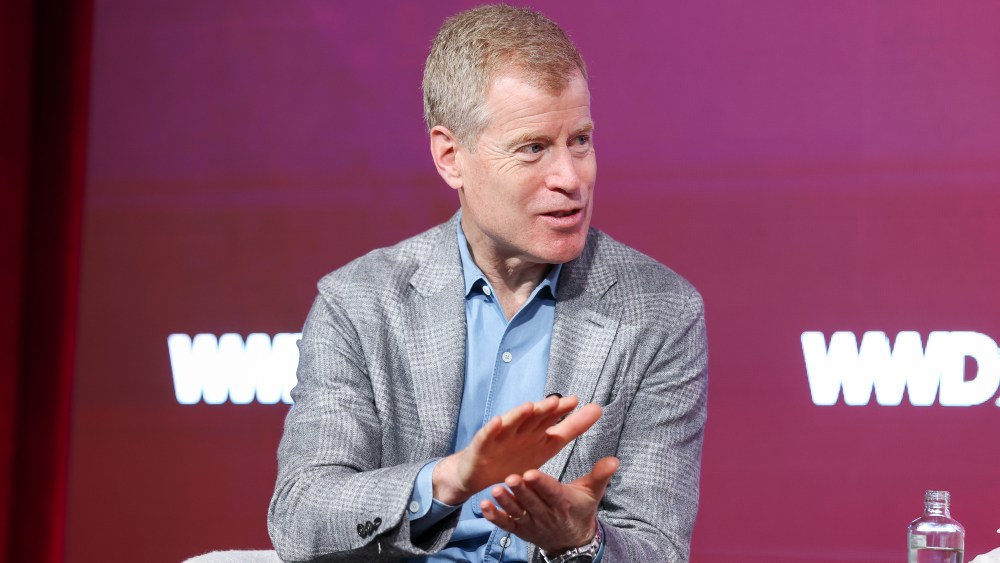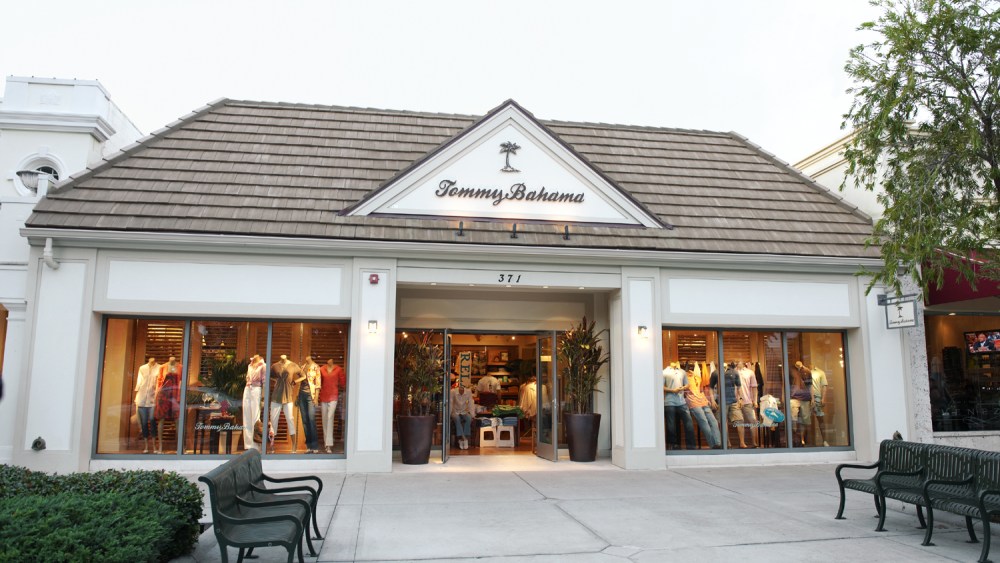Why Nordstrom Inc. co-chief executives and brothers Erik and Pete Nordstrom chose to take their company private is something they’ve been very private about.
Even last May, when the $6.25 billion deal taking Nordstrom Inc. private was finalized and announced, the Nordstroms maintained their silence — that is, until the WWD Apparel and Retail Summit.
“There’s been a bit of an evergreen desire on our part to have more control,” explained Erik. “Nordstrom is not just a place of employment for us. It means a lot to me and Pete and our family. There’s always that very strong desire for the company to be something our family is proud of, our teams are proud of. There’s always been this desire to have more control.” In fact, in 2017, the Nordstroms unsuccessfully tried to take their company private at a much higher price, $8.4 billion.
“There’s a lot of turmoil in our industry, and easy to be distracted with the financial aspects of running a business, of being a public company, particularly as we have experienced the last couple of years,” Erik added during a conversation with WWD deputy managing editor Evan Clark on the $6.25 billion transaction taking Nordstrom Inc. private and giving the Nordstroms a 50.1 percent stake and Mexican retailer Liverpool a 49.9 percent stake in the company.
You May Also Like
“Our multiple was going down along those of other department stores. Our stock price was not moving, and that puts pressure on a public company.
“We’re very, very fortunate to have a partner like Liverpool who’s completely aligned with us. They’re not a private equity firm. We’re not a private equity firm.” And the transaction, he added, didn’t load the company with too much debt.
“I don’t know if they (Liverpool) would like this comment but they’re a lot like us,” said Erik. “They’re a public company, and pretty much family controlled. They’re very long-term focused.”
According to Pete, going private facilitates “playing the long game,” rather than being too tied to managing the business, quarter to quarter.
“When you’re a public company, your scoreboard is your stock price, and that’s not entirely within our control,” Pete said. “A lot of that has to do with the sector you are in, the multiple, and all that stuff.”
The stock price, he said, “felt disconnected from our results at a certain point. That was kind of a morale-buster for our team. We could have a decent quarter and the stock would go down.” Without the pressures of Wall Street, “Our whole focus now is the success of the business and how we take care of customers. We went public for a reason in 1971 and that was the right thing to do at that time. But we’re a different company now with a different set of circumstances.”
Going private, added Pete, enables “a much longer perspective. It helps with focus and clarity. And from where we sit, that creates value, certainly over time. I think it eliminates distraction. It just feels like we have the ability to invest time and energy to what this is all about. There’s a lot of rigor that is good and accountability through the public process, and we’ve learned that. We want to maintain that urgency and that accountability, but we also wanted to create more focus on what we’re doing.”
The Nordstroms also explained that public companies have bigger, more diversified boards of directors, whereas as a private company, it’s a smaller board and there’s less work required to bring each director up to speed on what’s going on. “We get into subjects very quickly,” said Erik. “Liverpool is dealing with a lot of the same things we’re dealing with, and they’re really good. So we’re curious about what they have to say, and curious how they run the business.
“It’s important for our team to know that this isn’t a merger,” said Erik. “There’s nothing about the deal that required some synergies, be it cost or revenues or margins. It was very much an investment.” Now Nordstrom and Liverpool “can learn from each other. There’s a lot of curiosity on both sides.”
Before deciding on Liverpool to do the deal, “We talked to a lot of private equity firms, sovereign funds, and a few retailers,” said Erik. “Understandably, what comes back is, how can they lower their risk? How can they have more control. The most risk is in those first couple years of the deal so how can they extract money from the entity?
“When we talk about uses of cash with Liverpool, their reaction has always been ‘the most important thing is to invest in the business,’” said Erik. “We believe that long-term value comes from investing in the business. They never lead with ‘we need to get the return on our investment.’”
“We don’t talk about financial engineering,” said Pete. “It’s not about an exit strategy that makes one rich. It’s not about the synergies of a merger. None of that is the case.” Liverpool, he said, is “the common equity investor of our business. They just want us to be successful. They’re really curious about what we’re up to.”

“Customers don’t care if you are public or private,” said Pete. “They want to go to places they trust and that create great experiences which makes them feel good.”
One issue the Nordstroms dealt with as a public company was how Wall Street evaluated their company. “We get viewed as a department store. And that has its own negative connotations to it, but it’s an anachronistic way of thinking of the business,” said Pete. “Everything’s changed. We have a very big online business. It’s about 40 percent of our business. We have a very big off-price business, which is a very hot commodity in retail but we didn’t get a lot of credit for that.”
While the bulk of Nordstrom’s revenues are generated by the brick-and-mortar stores, for the last 25 years or so, Erik explained, “We’ve been trying to build that ecosystem so it works in a seamless way for the customer,” and integrates stores and e-commerce in ways that make it easier for shoppers.
The Nordstroms don’t view their department store, e-commerce and off-price channels as separate businesses. Nor do customers. “No customer describes themself as an e-commerce channel customer, or a store channel customer. Almost all customers go back and forth between channels,” said Erik.
“We’ve been in e-commerce for a long time,” said Erik. “We got started pretty early, and it’s scaled a lot. Nordstrom.com is our most profitable channel. It’s unusual in our industry to have e-commerce be the most profitable channel.”
Erik said the Rack stores represent “the single biggest customer acquisition channel” for the Nordstrom department stores. “A lot of our new Rack customers end up migrating to the Nordstrom banner.”
The Nordstroms have been relentless on providing service and putting customers, as they tend to say, “in the center” of everything they do.
“Customers define what good service is. And so you got to be curious, and you got to pay attention to it,” said Pete. “It has evolved over the years. The convenience part of what service means is more important now than what we first started with. There is a much more high-touch way of defining customer service. For us, the best thing about that is, first of all, everyone in the company can participate in that, and everyone understands what good service is. And frankly, it’s the biggest differentiator that any of us really have. Most of what we sell, you can buy somewhere else and and so why would someone choose Nordstrom? It’s the way that we make customers feel, and hopefully, the experience and service everything goes with it. It’s what we’re just laser-focused on. It just never changes.”
“That one-to-one, authentic human experience is so vital for us, and that doesn’t make a great slide for an investor presentation,” said Erik. “It’s not new technology and a new business model. It’s not reinventing something. We can’t do anything new if we don’t have that focus. It’s more important now, because we all have to be more cognizant of what our points of difference are. A customer doesn’t have to get off their couch to buy the stuff that we sell, so why are they going to engage with us versus an Amazon or any of the real big platforms. There’s certainly new capabilities you need to add to be in the ballgame but we have to have clear points of difference too. We have stores, we have people that can connect with customers in very human ways. And so we have to have areas we are great at.”
“Pandemic was certainly for us, a very tough time, and we put a stake in the ground that we should be a growth company which may sound obvious for any retailer,” Erik said. “But at the time, and particularly being labeled as a department store, it was not obvious. There’s opportunities to grow online and in marketplace, that’s one of the big drivers of our online growth. The Rack has tons of opportunity.
“But we need to grow Nordstrom stores too. We’re not going to accept that it’s a segment losing market share, and people have other choices… We need to have an increase. We need to find a way of taking care of customers, whether it’s getting a bigger share of their wallet or getting more customers in the door. That’s been an important shift for us, and it’s helped a lot because we’re seeing growth in all of our areas.”
At department stores, there’s still a “visceral, tactile way of shopping, and the social part of being around people, that people like,” said Pete.


